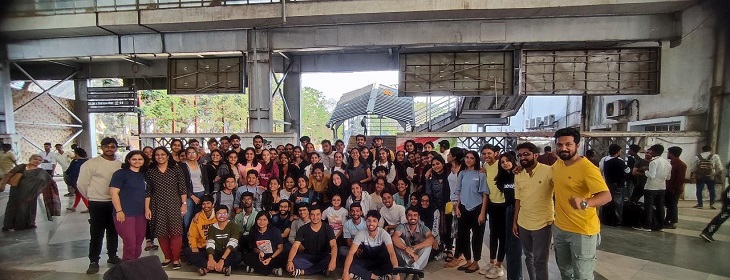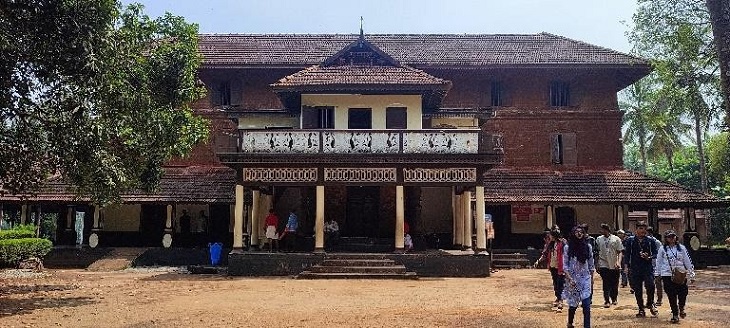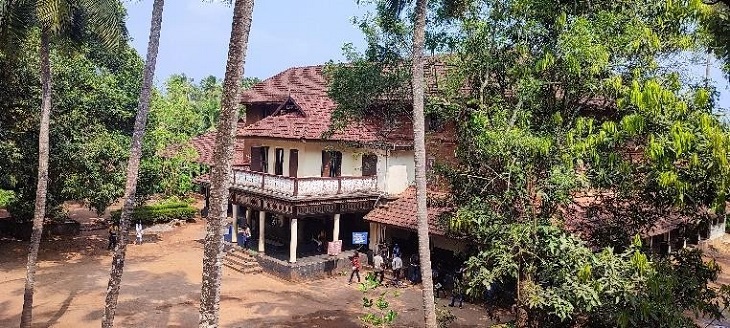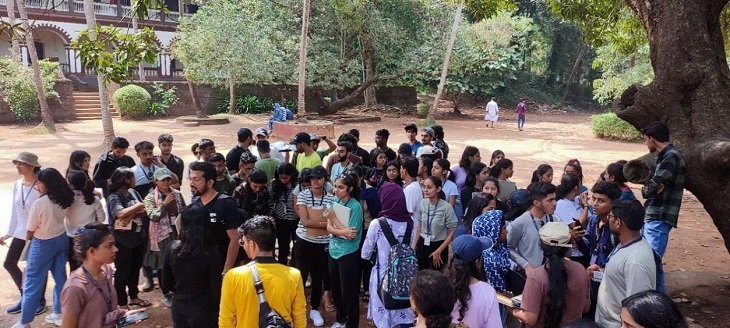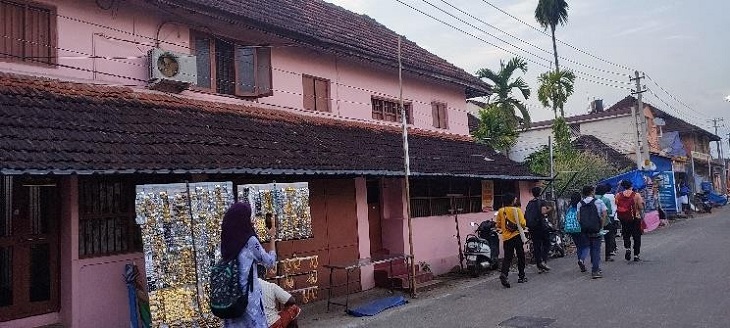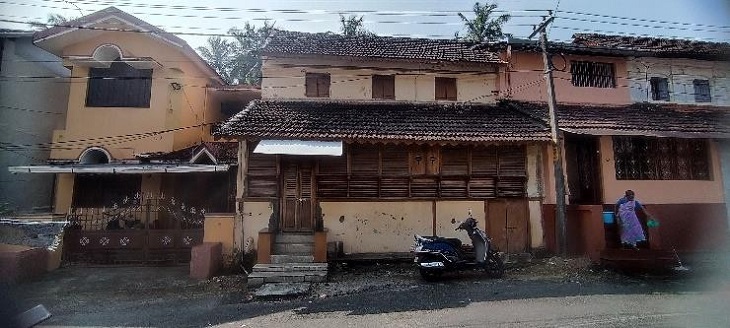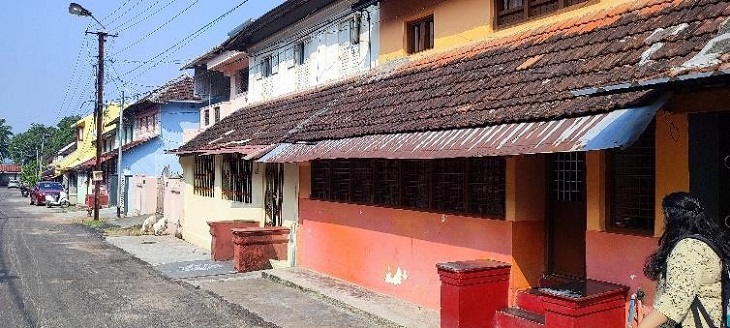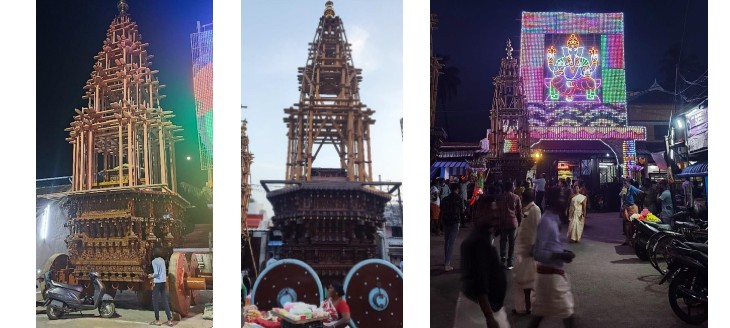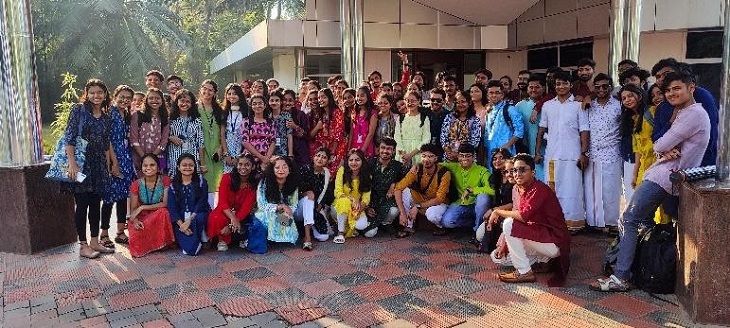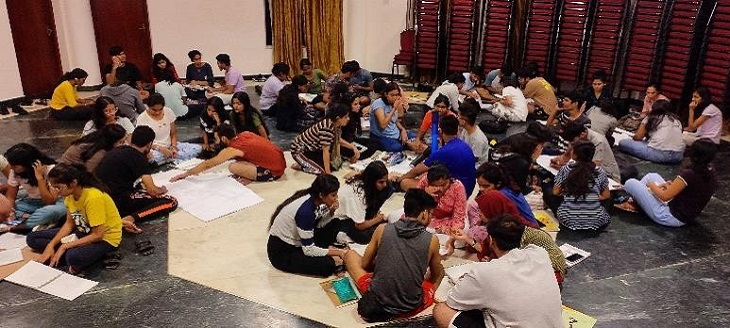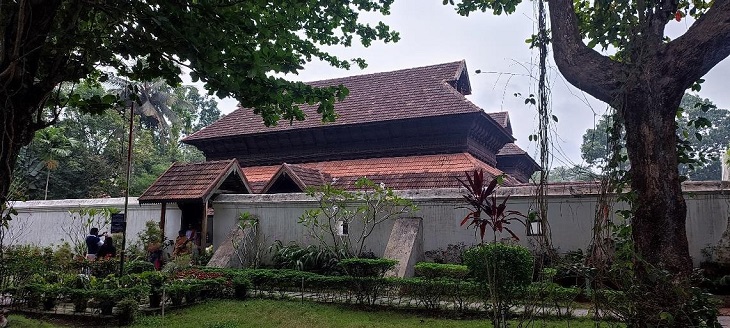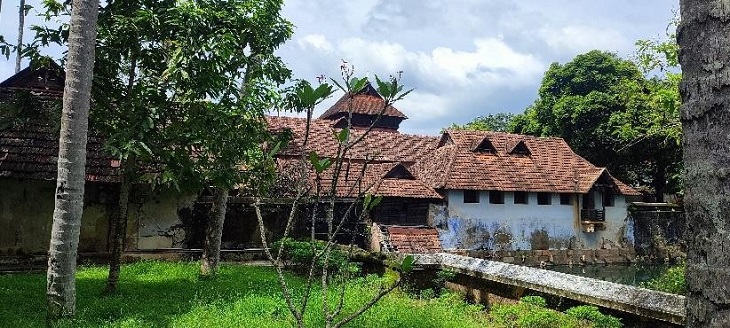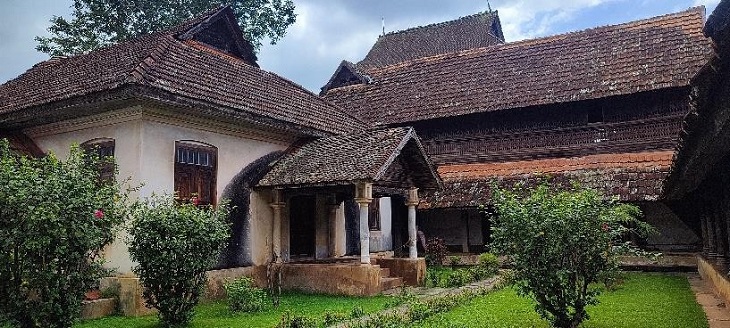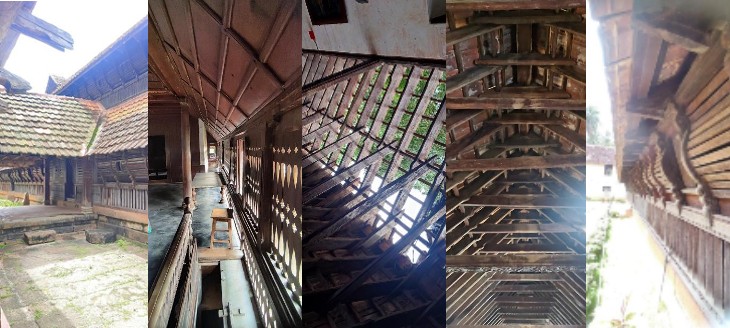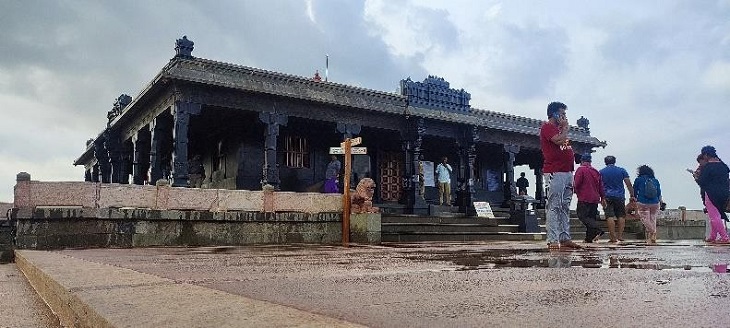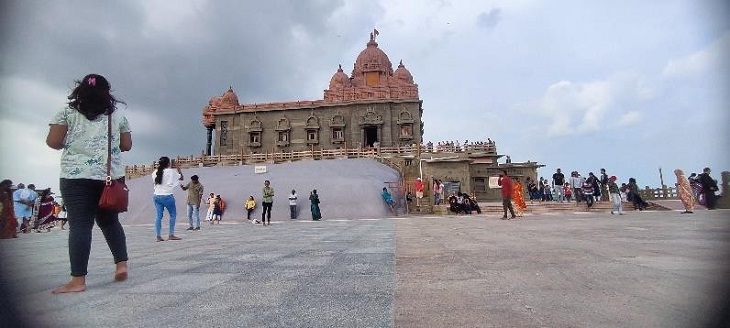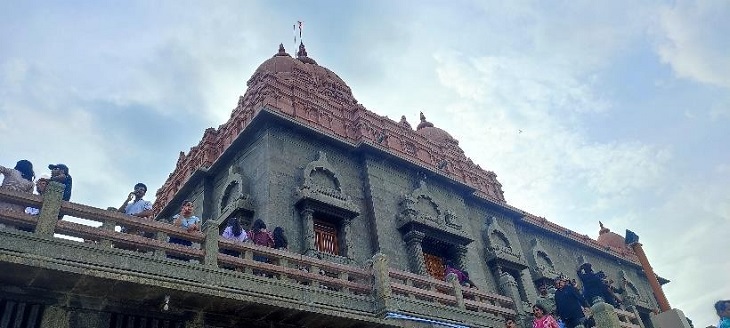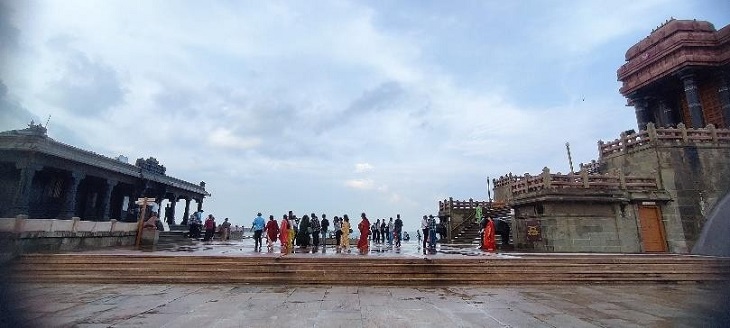| Tour Destination | Kalpathy, Palakkad – Kochi – Trivandrum - Kanyakumari |
| Tour Dates | 8th to 17th November, 2022 |
| Faculty team | Prof. Vrinda Padhye Prof. Jayraj Ghatge Prof. Aditya Gujarkar Prof. Gauri Damle |
| YouTube Link | https://youtu.be/dgGdan0SzDw |
On 8th November 2022, a group of 68 excited second year students and four faculty members left for the state of Kerala for the study tour. This was their first ever study tour as they didn’t go for any in their first year of architecture.
On the way to Kalpathy, the first structure visited was “Varikkasseri Mana”. It is one of the oldest traditional aristocratic Namboothiri family houses in Kerala. Built in Kerala architectural style on a plot of land measuring approximately 4 acres, the building is located at Manissery, a village in Ottapalam in Palakkad. It is a popular shooting location for Malayalam films.
The next halt was at Palakkad as the students were asked to document the heritage village of Kalpathy. It is located at the bank of river Nila. The group reached Palakkad at the evening of 9th November 2022 and the stay was for 3 days. Kalpathy is the first heritage village of Kerala and roots back to the 14th century. The residents of the village are Tamilian Brahmins. The villagers have contributed in the field of literature, tradition, music and other arts. It is also known to be the hub of Carnatic music.
The architecture of Kalpathy comprises of houses in a linear pattern. They share common walls. The houses have the rice flour kolam (artful drawing that is religious and ritualistic). The streets wake up to Venkatesha Suprabhattam, recitation of Vedic mantras, and Shiva Stotrams. The highlight of the village is the famous Ratholsavam – the chariot festival. The heavily decorated temple chariots (Raths) are rolled through the village streets is the major attraction of the car festival. Sree Vishvanathaswamy temple is the main center of the festival while the three satellite temples in the village of new Kalpathy, old Kalpathy, and Chattapuram also take part in it.
On 12th November, 2022 the group left for Kochi. On the way we visited Shrine Basilica of Our Lady of Dolours. It is situated in Thrissur on the way to Kochi. It was established on 10th October 1925. It is the tallest church in India and third tallest in Asia. The style of architecture is Gothic. The students were mesmerized by the scale of the structure and studied the pointed Arches.
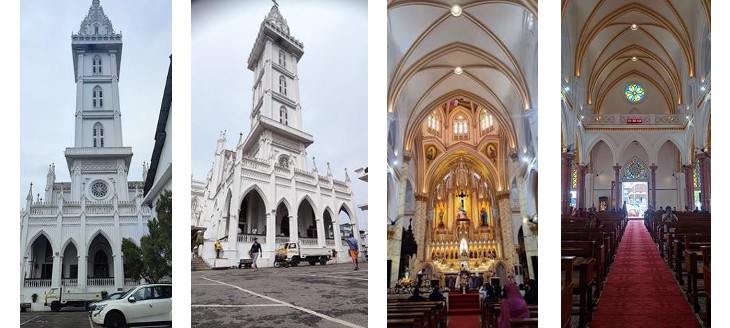
After visiting the church, the next stop was Sri Vadakkunnathan Temple. It is classical example of the architectural style of Kerala. Mural paintings depicting various scenes from Mahabharata can be seen on the walls of the temple. It is situated at the elevated hillock in the center or Thrissur city. There is a massive stone wall enclosing an area of around 9 acres. Inside the wall, the four gopurams face cardinal directions. The entrance into the inner temple is through a passage through the corridor. The inner temple is separated from the outer temple by a broad circular granite wall. The students learned how the traditional architecture becomes the reflection of religious activities.
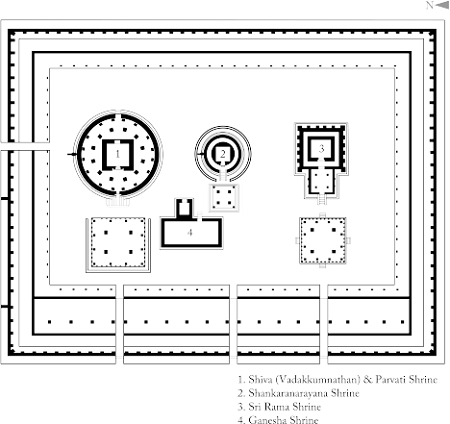
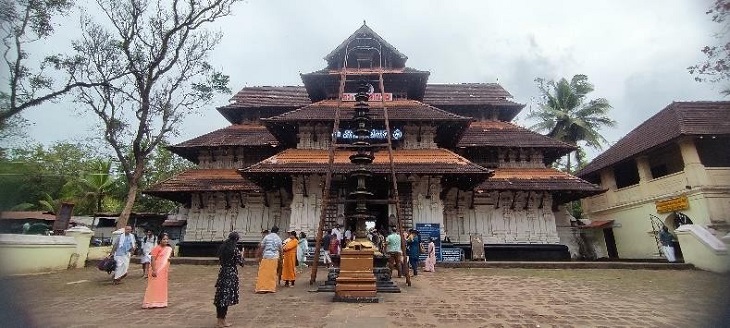
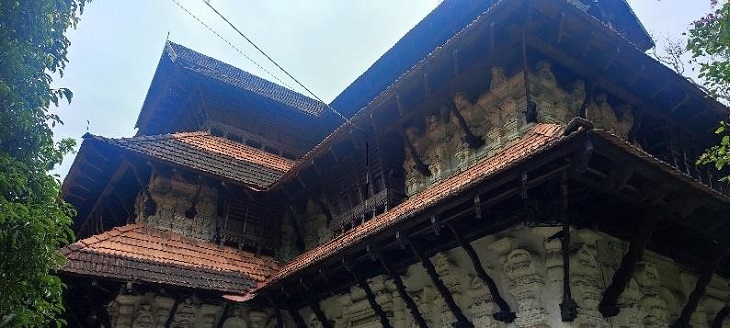
In the evening the student reached Fort Kochi at 5 pm. Fort Kochi takes its name from the Fort Manuel of Cochin, the first European fort on Indian soil, controlled by the Portuguese East Indies. This is part of a handful of water-bound islands and islets toward the south-west of the mainland Kochi, and collectively known as Old Cochin or West Cochin. The students were shown how the Chinese fishing nets work. Then the students explored the area and the culture.
On 13th November, 2022, the students visited the Paradesi Synagogue. It is located in Mattancherry Jew town, a suburb of the city of Kochi, Kerala, India. It was built in 1568 AD. by Samuel Castiel, David Belila, and Joseph Levi. Today it is the only functioning synagogue in Kochi. After the synagogue, the students gave a visit to Mattancherry Palace. It is also known as the Dutch palace. It is famous for its long and spacious halls with a central courtyard. It is also the home of deity of the royal family known as Pazhayannur Bhagavathy. It is a double storied structure and has a large collection of murals. They depict the epics of Ramayana and Mahabharata. The students witnessed life-size portraits of kings of Kochi since 1864, sheathed swords, daggers, axes, etc.
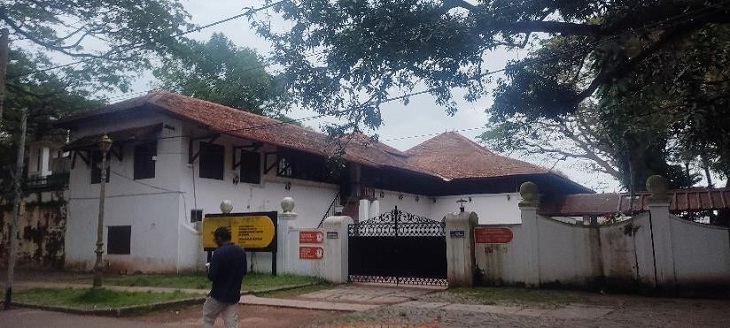
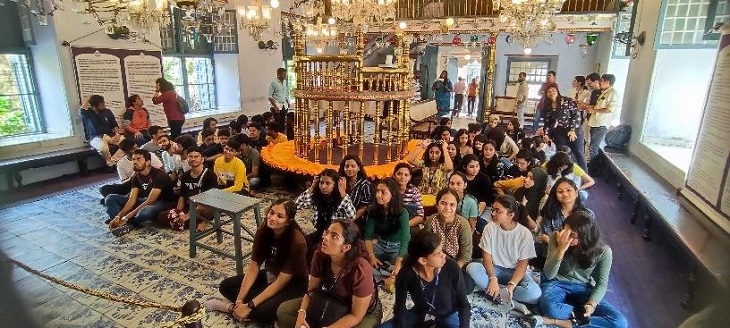
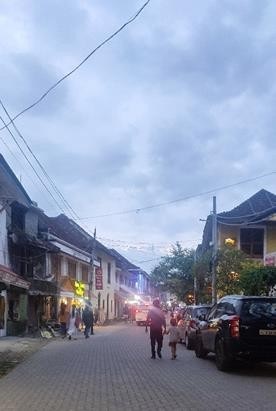
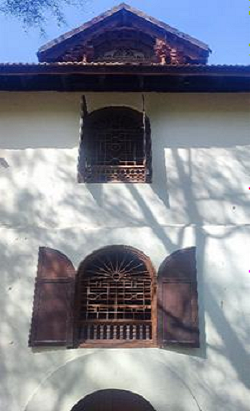
On the way to Trivandrum, the group visited Krishnapuram palace. It is a palace and a museum located in Kayamkulam, near Alappuzha district. It was built in 18th Century by Anizham Varma. The architecture is of Kerala style and consists of gabled roof, narrow corridors and dormer windows. It contains the exhibits that belong to the Palace and its former occupants – the Maharaja Varma. It has 16 ‘Kettus’or blocks and ‘Nadumuttam’ or open areas in the center or courtyards. It is surrounded by verandahs all around to protect it from the damage due to rain. The roof is covered with Mangalore tiles. The students then returned back to hotel.
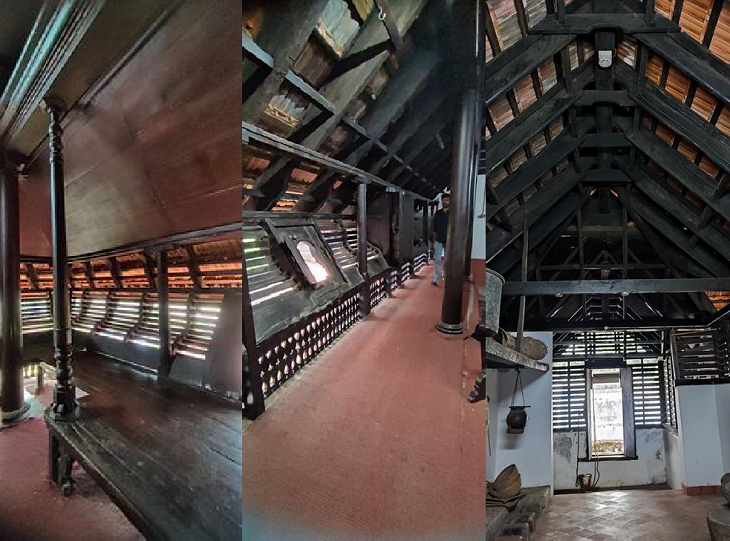
On 14th November, 2022, the students visited the Laurie Baker Center for habitat studies. It was created by the friends of Ar. Laurie Baker to propagate his philosophy of the concept of sustainable development through research, extension, training, documentation, dissemination and networking. The students visited all the structures and sketched the essence of the architecture on the display. The students also listened to the valuable guidance of the chief administrative officer of Laurie Baker Center, Mr. V.K. Anilkumar who talked about the life of the architect and his principles.
Then the students visited Ar. Ashams Ravi’s residence who follows the same principle and style of architecture. He is an expert in using the recycled materials. The students got an opportunity to talk to him and learn about the style and principles of architecture. Students also visited Loyola Chapel in the evening.
On 15th November, 2022 the students left the hotel early morning at 5.15 am to visit the Padmanabhswamy temple. The temple is built in an intricate fusion of Chera style and Dravidian style of architecture. It has got high walls and 16th century Gopura. In the Garbhagriha, Padmanabha reclines on the serpent Anantha or Adi Sesha. The students witnessed the ancient architecture and the scale of the elements of the temple. Then they travelled to Kanyakumari.
Vivekananda Rock Memorial is a monument and popular tourist attraction in Kanyakumari, India’s southernmost tip. The memorial stands on one of the two rocks located about 500 meters off mainland of Vavathurai. It was built in 1970 in honor of Swami Vivekananda, who is said to have attained enlightenment on the rock. According to legends, it was on this rock that Goddess Kanyakumari (Parvathi) performed tapas in devotion of lord Shiva. A meditation hall known as Dhyana Mandapam is also attached to the memorial for visitors to meditate. The design of the mandapa incorporates different styles of temple architecture from all over India. The rocks are surrounded by the Laccadive Sea where the three oceans Bay of Bengal, Indian Ocean and the Arabian Sea meets. The memorial consists of two main structures, the Vivekananda Mandapam and the Shripada Mandapam. The students experienced the water ride to the rock and spend some time relaxing an exploring on the rock.
Then they travelled back to Trivandrum and boarded the train back to Mumbai on 16th November, 2022.
